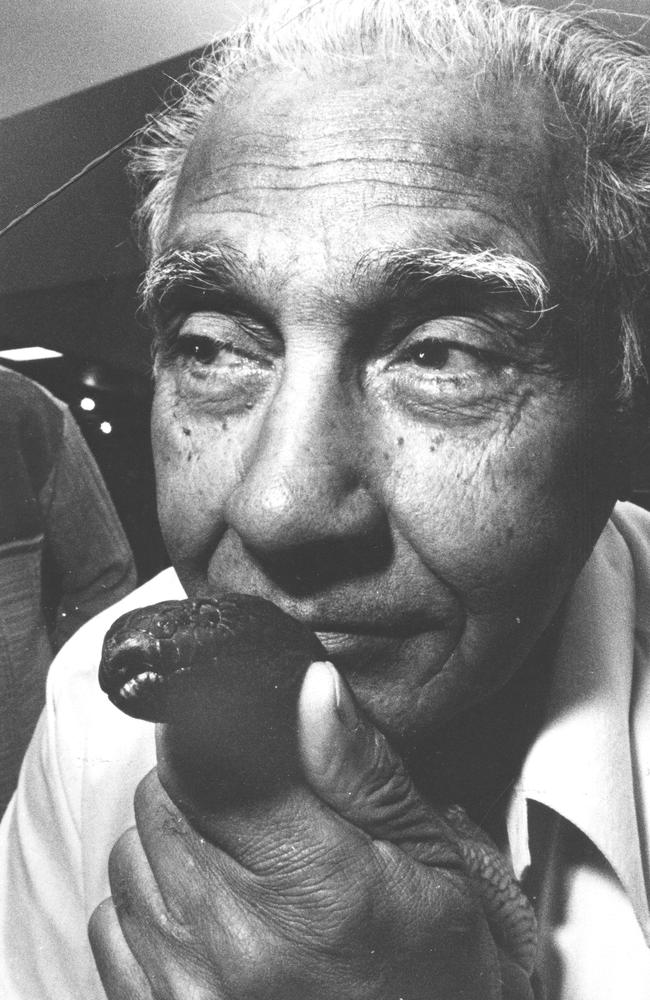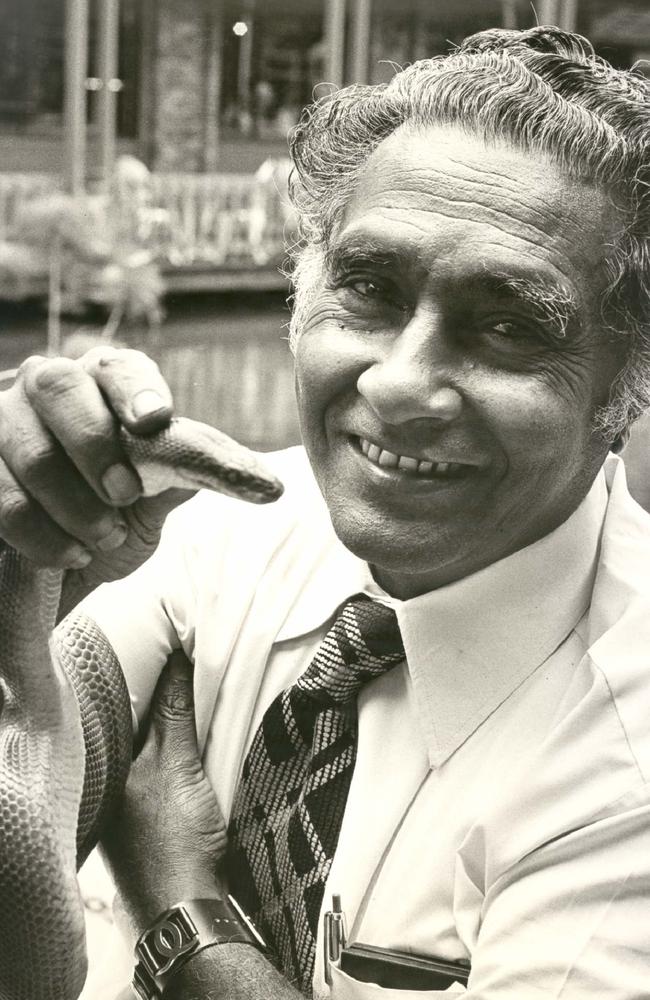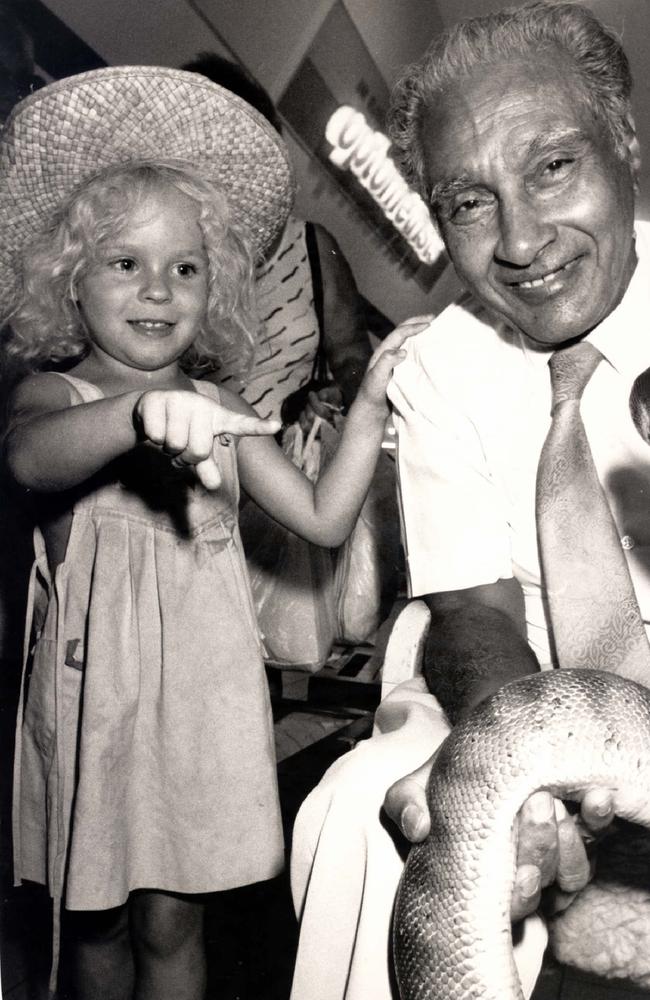Antivenin pioneer remembered for his snake wrangling at schools
Renowned snake wrangler and Antivenin pioneer Ram Chandra is remembered by generations for his deadly snake exhibitions, writes Dot Whittington.
QLD News
Don't miss out on the headlines from QLD News. Followed categories will be added to My News.
The name Ted Ramsamy may not be familiar, but generations of Queenslanders will remember the snake-handling exhibitions of Ram Chandra, the Taipan Man.
Although his greatest achievement was his role in developing a lifesaving antivenim for taipan bites, to most he was simply the snake man.
During the latter half of last century, he travelled to primary schools around the state, bringing out deadly snakes within striking distance of enthralled children.
In today’s world, the shows would be ruled too dangerous, but Ram Chandra gave young students an education they wouldn’t forget.

Sometimes he would show the scars of his own reptilian run-ins but foremost he was an educator, his Pit of Death show providing valuable lessons about recognising venomous and non-venomous snakes and the lifesaving treatment of snake bites.
There was none better qualified than Ram Chandra who brought together showmanship and science, and made a valuable contribution to both worlds.
Edward Royce Ramsamy, known as Ted, was born on May 21, 1921, at Lawrence, a farming settlement on the Clarence River where his grandparents, like many other migrants from India, had settled.
After leaving Grafton High School in 1939, he went to Sydney where he met Nazir Shah at Luna Park in 1942 and was introduced to snakes.
Realising his ability to anticipate a snake’s intentions and movement by observing its muscle contractions, young Ted went into partnership with Nazir, bought 20 tiger snakes and went on the show circuit with The Carnival of Eastern Wonders.
Although Ted had never worn a turban in his life and spoke English without an accent, he looked right for the part of Cobra Boy, the fearless and daring Indian handling the deadliest snakes in the world.
The pair travelled the show circuit until arriving in Mackay in June 1944.
Nazir moved on and Ted stayed, married, and in 1946, went solo and adopted the name Ram Chandra for his show Pit of Death.
Ram was always on the lookout for new snakes and was intrigued to hear about a big brown snake that Queenslanders called the Traveller Brown or Horse Snake.
He bought a 2m specimen in Ingham, and soon discovered it was faster and more aggressive and had a distinctive head.

He identified that it was not a brown snake, but a taipan.
Doctors had been puzzled by a wave of deaths after victims didn’t respond to the usual treatment for brown snake bite and Ram realised that the taipan was responsible, even though it was commonly believed it didn’t travel south from Cape York.
After asking locals to bring in specimens, Ram correctly proposed that they were also in north and Central Queensland.
He developed a way to milk live snakes using a piece of thin rubber stretched across a glass jar, and although often dismissed as a flamboyant showman, played a crucial role in using the venom in developing antivenin.
He successfully milked his first taipan in 1951, but it was four years before it was developed as an antivenin.
The local government medical officer arranged for the taipan venom to be processed at the Mackay Sugar Research Station and sent to the Commonwealth Serum Laboratories where it was gratefully received.
Just three weeks after the serum was distributed, it saved the life of a Cairns schoolboy.
Many more followed, including Ram himself a year later.
While addressing more than 50 ambulance officers at a conference in Mackay, he was bitten repeatedly by a taipan.
To the horror of the onlookers, Ram continued to demonstrate the procedure on himself before being rushed to Mackay Base Hospital, where he knew the lifesaving antivenin was available. His reputation spread far and wide and Ram became the celebrated Taipan Man, but apart from being paid for venom supplied to CSL, had no government assistance.

Handling and milking venomous reptiles meant Ram was unable to get life insurance, yet while supporting his family of 11 children, three of them adopted, he also travelled at his own expense to schools and public education sessions and raised vast sums for charity.
In May 1965, he became paralysed from the waist down by the accumulated effects of snake bites and was offered an invalid pension, which he refused.
With physiotherapy and a determination, he walked with the support of a walking stick and continued his work. Ram Chandra was awarded the British Empire Medal in 1975 and the Order of Australia Medal in 1995.
After years in the Pit of Death, he died in Mackay in 1998, aged 77.
There is a park and a street named in his honour in Mackay, but the name Ram Chandra is best remembered by the generations who watched him with his deadly snakes.




